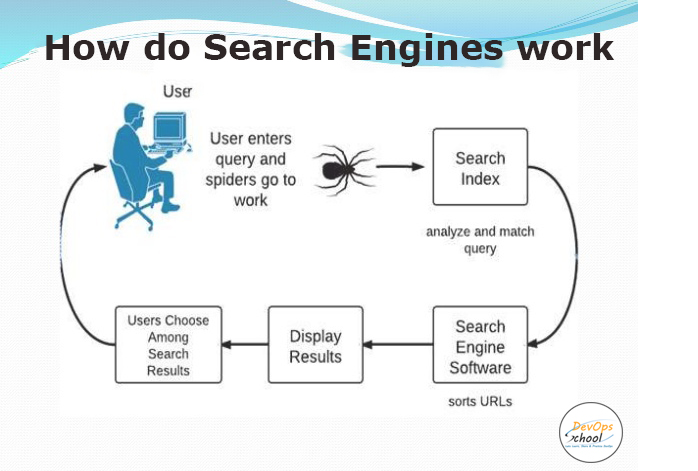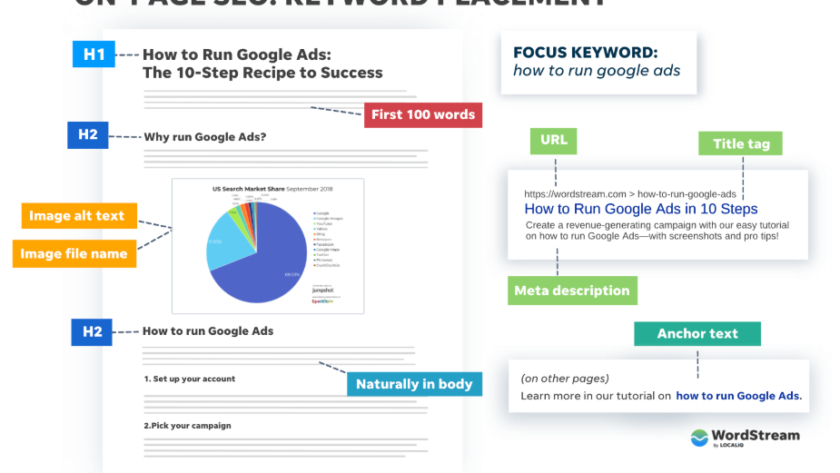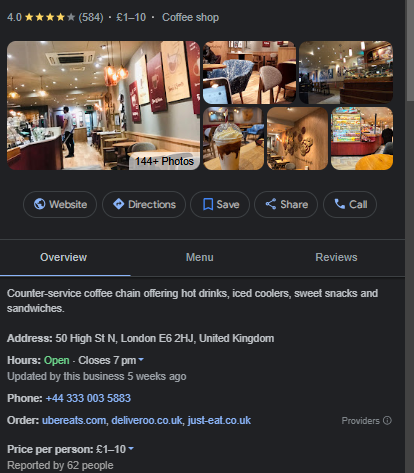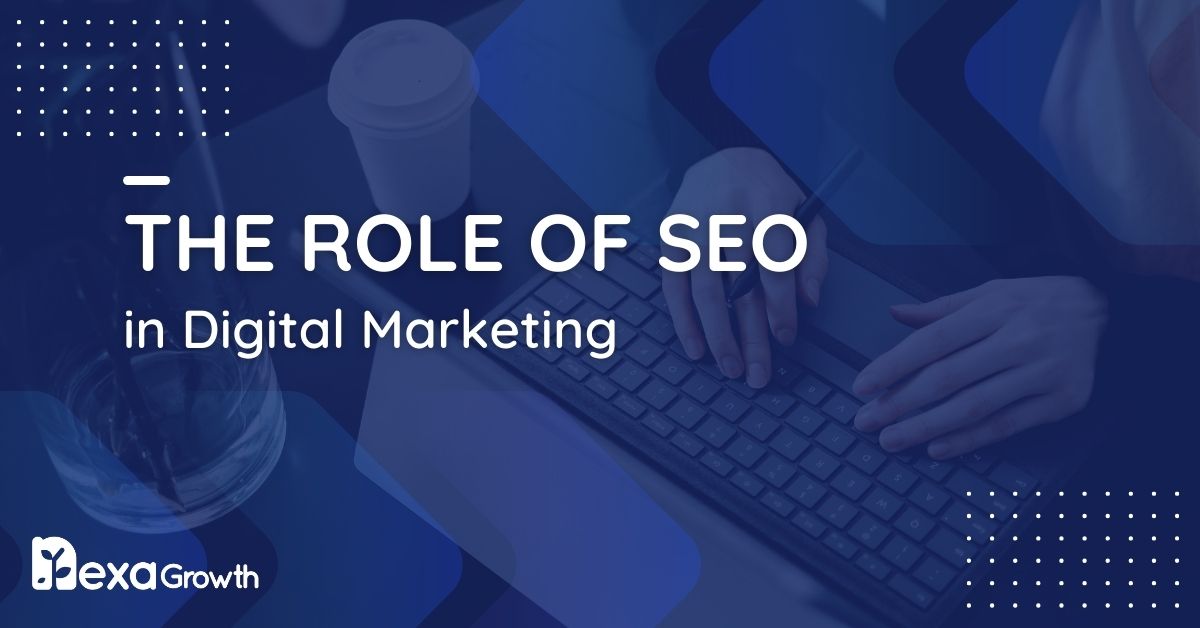- SEO is a foundational component of a comprehensive digital marketing strategy.
- It drives sustainable business growth by attracting the right audience and boosting revenue.
- SEO delivers long-term value and has a higher return on investment than paid advertising.
- It’s essential for increasing online visibility, building brand trust, and driving high-quality traffic.
- Businesses must adapt to constant algorithm updates from search engines to maintain rankings.
You’ve built an amazing website, crafted compelling content, and launched your business online. But there’s one problem—no one can find you. That’s where SEO (Search Engine Optimization) steps in.
Today, 75% of users skip scrolling past the first page of search results, meaning if your business isn’t ranking high on Google, Bing, or Yahoo, you’re practically invisible to potential customers.
Even more striking, 68% of all website traffic comes from organic search, making SEO not just an option—but a necessity for business growth.
Let’s dive deeper into how SEO plays a pivotal role in digital marketing and why it should be at the core of your growth strategy.
Leverage High-Impact SEO Strategies
Whether you’re looking to increase visibility, dominate search rankings, or generate high-converting leads, Nexa Growth can help.
Contact UsWhy Should You Care About SEO?
SEO isn’t just about ranking higher on search engines; it’s about attracting the right audience, driving sustainable traffic, and ultimately boosting revenue.
When done right, SEO works 24/7, unlike paid ads that stop generating leads the moment you pause the budget.
For businesses, especially in competitive industries, SEO is the backbone of digital marketing—it enhances brand credibility, improves user experience, and delivers a strong return on investment (ROI).
That’s why top-performing companies invest in SEO as a long-term strategy rather than a short-term fix.
Understanding SEO in Digital Marketing
To truly grasp the role of SEO in digital marketing, we need to break it down into its fundamentals.
SEO isn’t just about inserting keywords or getting backlinks—it’s a dynamic, ever-evolving strategy that aligns with how search engines work, user intent, and digital marketing objectives.
What is Digital Marketing?
Before we dive into SEO, let’s first define digital marketing:
Digital marketing refers to any online strategy that helps businesses connect with their target audience using the internet and digital channels. This includes:
- Search Engine Optimization (SEO) – Optimizing websites to rank higher on search engines.
- Pay-Per-Click Advertising (PPC) – Running paid ads on Google, Bing, or social media.
- Content Marketing – Creating valuable blogs, videos, and guides to attract customers.
- Social Media Marketing – Leveraging platforms like Facebook, Instagram, and LinkedIn for brand awareness.
- Email Marketing – Sending targeted emails to nurture and convert leads.
While all these channels are essential, SEO plays a foundational role, ensuring your website gets consistent organic traffic—without relying on paid ads.
What Is SEO and Why Is It Important?
SEO, or Search Engine Optimization, is the process of optimizing your website to improve its visibility in organic (non-paid) search results on platforms like Google, Bing, and Yahoo.
It’s critical to digital marketing, because:
- 93% of online experiences start with a search engine.
- Over 90% of pages receive no organic traffic from Google—because they’re not optimized for search.
- SEO leads have a 14.6% conversion rate, compared to only 1.7% for outbound leads (cold calls, emails, etc.)
In simple terms, SEO helps businesses:
✔ Rank higher on search engines → More visibility
✔ Drive high-quality organic traffic → More potential customers
✔ Improve brand trust & credibility → Higher engagement & conversions
Unlike PPC, where businesses pay for each ad click, SEO delivers long-term value—helping you generate traffic without ongoing ad costs.
How Search Engines Work
To understand SEO’s role in digital marketing, we need to unpack how search engines like Google rank websites.
Search engines crawl, index, and rank billions of web pages using complex algorithms. Here’s how it works:

-
Crawling and Indexing
- Search engines send out bots (or crawlers) to discover new and updated pages.
- These pages are indexed, meaning they’re stored in Google’s massive database.
-
Ranking & Search Engine Results
- When a user searches for something, Google analyzes thousands of ranking factors to decide which pages are most relevant.
- It then displays results in order of relevance, based on:
- Keywords & Content Quality – Is the page answering the user’s query?
- Backlinks & Authority – Does the website have high-quality links?
- User Experience & Mobile-Friendliness – Is the page fast and easy to navigate?
-
Organic vs. Paid Results
- Organic results – Websites that earn their ranking through SEO (unpaid).
- Paid results – Websites that appear due to PPC ads (businesses pay per click).
Get an SEO Audit & Improve Your Rankings
Reach your website’s potential with Nexa Growth’s expert SEO audit. Boost traffic and visibility with us!
Contact UsThe Key Role of SEO in Digital Marketing
SEO is more than just ranking higher on Google—it’s a powerful tool that drives brand visibility, increases trust, and enhances user experience.
Today, a strong SEO strategy is essential for businesses looking to grow sustainably. Here’s what SEO can do for you:
-
Boosting Online Visibility and Brand Authority
- When a website ranks on the first page of search results, it’s seen as more credible and authoritative by users.
- A study by Backlinko showed that the top three Google search results get 54.4% of all clicks.
- A higher ranking means more exposure to potential customers, increasing the likelihood of conversions.
-
Increasing Organic Search Rankings and Traffic
Unlike paid advertising, which stops generating traffic once the budget runs out, SEO provides long-term traffic growth.
- Organic search accounts for 68% of all website traffic.
- Websites that optimize for relevant keywords and search intent attract users actively looking for their services.
- Higher rankings mean higher click-through rates (CTR), leading to more inbound leads.
-
Enhancing User Experience and Website Engagement
Google’s ranking algorithms prioritize user experience (UX). A well-optimized website provides:
- Fast page speed – 53% of mobile users leave if a site takes more than 3 seconds to load.
- Mobile-friendliness – With mobile searches surpassing desktop, mobile optimization is a must.
- Intuitive navigation & structure – Websites with clear layouts and internal linking perform better.
By focusing on UX, businesses not only rank higher but also reduce bounce rates and increase time spent on-site, leading to more conversions.
- 81% of consumers conduct online research before making a purchase.
- Businesses that appear at the top of search results are perceived as more trustworthy and legitimate.
- Google rewards websites that demonstrate Expertise, Authority, and Trustworthiness (E-E-A-T).
-
Maximizing ROI Through SEO Strategies
SEO has one of the highest returns on investment (ROI) in digital marketing:
- SEO generates 1000%+ more traffic than organic social media.
- SEO leads are more likely to convert.
- Unlike paid ads, SEO traffic does not require continuous spending once rankings are achieved.
-
Supporting Other Digital Marketing Strategies
SEO works in tandem with other marketing efforts to create a well-rounded strategy:
- Content Marketing – High-quality blog posts and landing pages improve both SEO and brand engagement.
- PPC Advertising – SEO and PPC together can dominate SERPs for maximum exposure.
- Social Media – Optimized content ranks better on search engines, increasing shareability and engagement.
Types of SEO in Digital Marketing
SEO is not a one-size-fits-all approach. To build a strong online presence, businesses must leverage different types of SEO strategies. Each type focuses on a specific aspect of website optimization, ensuring better visibility, user experience, and search rankings.
-
On-Page SEO (Optimizing Content & Structure)
On-page SEO refers to optimizing individual web pages to improve rankings and attract more relevant traffic. This includes:
- Keyword optimization – Placing target keywords in titles, headers, and throughout the content.

On-Page Keyword Placement- An Infographic by Wordstream - Meta tags & descriptions – Writing compelling title tags and meta descriptions to improve click-through rates.
- Content quality & relevance – Creating valuable, engaging, and informative content that answers user intent.
- Internal linking – Structuring links between related pages to help search engines crawl efficiently.
For example: If a business targets the keyword, “Matcha tea in East London,” an optimized page would include this keyword naturally, with supporting content that answers common questions and pain points. - Keyword optimization – Placing target keywords in titles, headers, and throughout the content.
-
Off-Page SEO (Building Authority and Trust)
Off-page SEO involves activities outside the website that impact rankings and brand credibility. Key elements include:
- Backlink building – Earning links from high-authority websites to boost domain trust.
- Guest blogging – Writing articles on industry-relevant websites to drive traffic and authority.
- Brand mentions & PR – Getting featured in news outlets, directories, and industry forums.
- Social media signals – While not a direct ranking factor, engagement on social platforms can increase traffic and brand awareness.
Why it matters: Google considers backlinks as “votes of confidence”, meaning the more quality links a site earns, the higher it ranks.
-
Technical SEO (Enhancing Performance & Usability)
Technical SEO ensures a website meets search engine requirements for indexing, crawling, and performance. It includes:
- Site speed optimization – Pages that load within 2-3 seconds have better rankings and lower bounce rates.
- Mobile-friendliness – Over 60% of searches happen on mobile, making mobile-first indexing crucial.
- Secure website (HTTPS) – Google favors secure (SSL-certified) websites over non-secure ones.
- Structured data (Schema Markup) – Helps search engines understand content better and display rich results.
For example, a slow, non-mobile-friendly site with technical issues will struggle to rank, no matter how great the content is.
-
Local SEO (Targeting Local Customers)
Local SEO is crucial for businesses that serve a specific geographic area. It helps businesses rank for local searches, such as “SEO agency in London”. This includes:
- Google Business Profile (GBP) Optimization – Ensuring business details (name, address, phone number) are accurate.

An Example of an Optimized GBP Page - NAP Consistency – Keeping contact information consistent across directories.
- Customer Reviews – Positive reviews on Google, Yelp, and industry directories help boost rankings.
- Local Citations & Listings – Getting listed on platforms like Yelp, Bing Places, and local business directories.
Why it matters:46% of all Google searches are seeking local information, making local SEO a must for businesses targeting a specific region
- Google Business Profile (GBP) Optimization – Ensuring business details (name, address, phone number) are accurate.
-
Keyword Research and Content Optimization
Keywords form the foundation of SEO. Without targeted keyword research, even the best content won’t rank well.
- Short-tail vs. Long-tail keywords – Balancing high-competition and low-competition search terms.
- Search intent – Understanding whether users are looking for information, comparisons, or to make a purchase.
- Content length & quality – Long-form content (1500+ words) tends to rank better for competitive keywords.
For example: Instead of just targeting “Coffee,” a better approach is to target long-tail variations like “Best coffee shops in east London” to attract highly relevant traffic.
-
Link Building and Authority Growth
Backlinks remain one of the top-ranking factors for search engines.
- High-quality backlinks – Links from reputable, high-authority websites boost rankings.
- Anchor text optimization – Ensuring links use relevant keyword-rich text.
- Diverse link sources – Acquiring backlinks from blogs, news sites, business directories, and forums.
Fun Fact: Pages with top-ranking positions on Google have 3.8x more backlinks than lower-ranked pages.
All-Inclusive SEO for Maximum Growth
Nexa Growth’s complete SEO service covers everything from audits to optimization—drive more traffic, rank higher, and grow your business.
Contact UsThe 5 Core Elements of an Effective SEO Strategy
A successful SEO strategy is built on five core pillars: keywords, content, on-page and off-page optimization, local & mobile SEO, and AI-driven search trends.
Each of these elements plays a crucial role in improving search rankings, driving organic traffic, and ensuring long-term digital success.
-
Keywords – The Foundation of SEO
Keywords are the backbone of SEO, connecting user search intent with relevant content. Without proper keyword targeting, even the best content may struggle to rank.
Key Aspects of Keyword Optimization
- Short-tail vs. Long-tail Keywords – Short-tail keywords (e.g., “Coffee”) have high competition, while long-tail keywords (e.g., “best coffee shop in East London”) are easier to rank for and attract more qualified leads.
- Search Intent Matters – Every keyword should align with what the user wants to achieve:
- Informational (e.g., “What is SEO?”)
- Navigational (e.g., “Moz SEO tool”)
- Transactional (e.g., “Buy SEO services in London”)
- Commercial Investigation (e.g., “Best SEO agencies in the UK”)
- Keyword Placement – Optimizing titles, headings, meta descriptions, and URLs without overstuffing.
- Competitive Research – Analyzing what keywords competitors rank for and identifying gaps.
Fun Fact: The top-ranking pages on Google tend to include their target keyword within the first 100 words. -
High-Quality Content – The Fuel for SEO
Content isn’t just about keywords—it’s about delivering value, answering user queries, and keeping visitors engaged.
What Makes Content SEO-Friendly?
- Originality and Depth – Content should add value beyond what competitors offer.
- Long-Form Content Wins – Articles over 1,500 words tend to perform better on Google.
- Engagement Signals – Content that encourages comments, shares, and backlinks ranks higher.
- Multimedia Enhancements – Using images, videos, and infographics to improve user experience.
- Regular Updates – Keeping content fresh with the latest trends and data.
Fun Fact: Blog posts with images get 94% more views than those without.
-
On-Page and Off-Page Optimization
SEO isn’t just about writing content—it’s about making it discoverable and authoritative.
On-Page SEO Essentials
- Title Tags & Meta Descriptions – Optimizing for click-through rates (CTR).
- Header Tags (H1, H2, H3) – Structuring content for readability and SEO.
- Internal Linking – Connecting related content to keep users on-site longer.
Off-Page SEO Essentials
- Backlink Building – Acquiring high-authority links from reputable sites.
- Social Signals & Brand Mentions – Increased engagement helps improve SEO performance.
- Guest Posting & PR – Getting featured on authoritative websites.
Fun Fact: Pages with at least one high-quality backlink are more likely to rank in the top 10 of Google. -
Local and Mobile SEO – Reaching the Right Audience
With 46% of searches being local and over 60% of searches happening on mobile, businesses must prioritize local and mobile optimization.
Local SEO Best Practices
- Google My Business (GMB) Optimization – Keeping business details updated and verified.
- NAP Consistency – Ensuring Name, Address, and Phone Number match across all listings.
- Customer Reviews – Positive reviews help with local ranking signals.
- Local Citations – Listings in directories like Yelp, TripAdvisor, and Yellow Pages.
Mobile SEO Best Practices
- Fast-Loading Mobile Pages – Sites that take longer than 3 seconds to load lose half their visitors.
- Mobile-First Indexing – Google primarily uses the mobile version of a website for indexing.
- Click-to-Call & Location Features – Making it easy for mobile users to contact businesses.
Fun Fact: 76% of people who search for something nearby visit a business within a day. -
AI & SEO – The Future of Search
Search engines are getting smarter, and AI is shaping how SEO works. Google’s RankBrain, BERT, and Helpful Content updates focus on user intent rather than just keywords.
AI-Driven SEO Strategies
- Voice Search Optimization – More searches are done using voice assistants like Siri and Alexa.
- Semantic Search & NLP (Natural Language Processing) – Google understands search queries in a more human way.
- Predictive Search – AI-driven suggestions are influencing how people search.
- Content Personalization – AI helps businesses deliver personalized search experiences.
Fun Fact: 27% of the global population now uses voice search on mobile.
Why SEO is a Long-Term Investment in Digital Marketing
Many businesses wonder whether SEO is worth the effort compared to paid ads (PPC) or social media marketing.
The truth is, SEO is a long-term investment that delivers sustainable traffic, brand credibility, and a higher return on investment (ROI) over time.
Unlike paid ads, which stop generating traffic once the budget runs out, SEO continues to drive organic visitors month after month, year after year.
-
SEO vs. Paid Ads: Which is More Sustainable?
SEO and PPC (Pay-Per-Click) advertising serve different purposes, but SEO provides long-term value without the need for ongoing spending.
Factor SEO (Organic Search) PPC (Paid Search) Cost Free (but requires effort & strategy) Pay-per-click (continuous spending) Traffic Growth Builds over time (long-term) Stops when ads are paused Credibility More trusted by users Seen as an ad (lower trust) Click-Through Rate (CTR) 70-80% of users ignore paid ads and click organic results Only 20-30% of users click ads Sustainability Continuous, long-term ROI Requires constant ad budget While PPC can deliver immediate results, SEO builds a long-lasting foundation for continuous lead generation, brand awareness, and lower customer acquisition costs.
-
SEO’s Impact on Lead Generation & Conversion Rates
SEO isn’t just about driving traffic—it’s about attracting the right audience and converting them into customers.
- SEO leads convert at a 14.6% rate, compared to 1.7% for outbound marketing (cold calls, email blasts, and more)
- Websites ranking in the top 3 positions on Google get 75% of all clicks.
- Long-tail keywords (e.g., “best SEO services for small businesses”) have 3-5x higher conversion rates than short, generic keywords.
A well-executed SEO strategy attracts high-intent users who are already searching for your services, making it one of the most effective inbound marketing methods.
-
Keeping Up with Algorithm Changes and SEO Trends
Google constantly updates its search algorithms, which means businesses must adapt their SEO strategies to maintain rankings.
Major Google Algorithm Updates That Changed SEO
- Google Panda (2011): Penalized low-quality, duplicate content.
- Google Penguin (2012): Cracked down on spammy backlinks.
- Hummingbird (2013): Focused on semantic search, understanding the meaning behind queries.
- Mobilegeddon (2015): Prioritized mobile-friendly websites in search results.
- RankBrain (2015): Introduced AI-driven search results.
- BERT (2019): Improved understanding of natural language & search intent.
- Helpful Content Update (2022): Prioritized content that offers real value to users.
- Core Updates (Ongoing): Broad algorithm updates that aim to improve the overall quality and relevance of search results. These happen multiple times a year.
- Spam Updates (Ongoing): Focused on combating various spam tactics used to manipulate search rankings. These also happen multiple times a year.
Because search algorithms evolve, SEO is not a one-time task—it requires ongoing monitoring, adjustments, and improvements. Businesses that stay ahead of trends dominate search rankings, while those that ignore SEO risk losing visibility.
-
The Long-Term ROI of SEO
SEO is one of the highest ROI digital marketing channels because it provides continuous organic traffic without paying for each visitor.
- A well-optimized page can generate traffic for years, unlike ads that stop working when the budget runs out.
- 80% of marketers say SEO delivers higher ROI than paid ads over time.
- The cost per acquisition (CPA) for SEO leads is 61% lower than traditional marketing methods.
Investing in SEO today ensures future-proof growth, as organic search remains the dominant traffic source across industries.
-
Why Businesses Can’t Ignore SEO in 2026 and Beyond
The digital landscape is more competitive than ever, and SEO is no longer optional—it’s a necessity for businesses looking to succeed online.
- People trust organic results more than ads.
- Voice search, AI, and mobile-first indexing are making SEO more important than ever.
- SEO compounds over time, meaning early investment leads to exponential growth.
Final Thoughts – SEO as the Backbone of Digital Marketing
SEO is no longer an optional marketing strategy—it’s the foundation of long-term business success in the digital world. Whether you’re a startup, a growing business, or an established enterprise, SEO helps you:
- Increase online visibility – Rank higher in search results and attract potential customers.
- Drive high-quality organic traffic – Reach users actively searching for your products or services.
- Build brand trust and credibility – Establish authority through valuable content and strong rankings.
- Generate leads and maximize ROI – SEO leads have higher conversion rates than paid ads.
- Stay ahead of competitors – Businesses investing in SEO dominate search results while others struggle for visibility.
How to Get Started With SEO?
If you’re new to SEO or struggling to rank, the best time to start is now.
Here’s what you can do today:
-
- Audit your website – Identify technical issues, slow page speed, or poor keyword optimization.
- Optimize for search intent – Focus on high-value keywords that align with user needs.
- Invest in high-quality content – Publish well-researched, engaging, and optimized content regularly.
- Build strong backlinks – Acquire links from authoritative websites to boost credibility.
- Focus on user experience (UX) – Ensure mobile-friendliness, fast load times, and clear navigation.
Nexa Growth – Your Partner in SEO Success
At Nexa Growth, we specialize in data-driven SEO strategies that help businesses rank higher, attract more traffic, and generate consistent leads. Whether you need on-page optimization, technical SEO fixes, or a full-scale SEO campaign, our team is ready to help.
Want to Dominate Search Rankings?
Contact us today and let’s start growing your business with proven SEO strategies.
Contact UsFAQs
1. How long does it take to see results from SEO?
2. How does SEO impact brand awareness?
3. What is the difference between white-hat SEO and black-hat SEO?
Black-hat SEO involves manipulative tactics like keyword stuffing, link farming, and cloaking, which may lead to Google penalties and ranking drops. While it may deliver short-term gains, it is highly risky and unsustainable.

